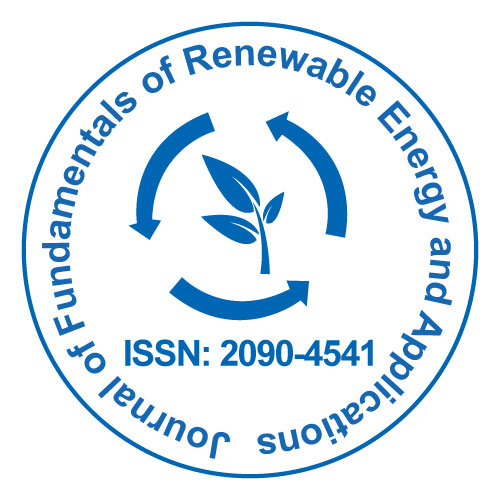
Journal of Fundamentals of Renewable Energy and Applications
Open Access
ISSN: 2090-4541
+44 1300 500008

ISSN: 2090-4541
+44 1300 500008
Martin-Lara M A, Blazquez G, Ronda A, Ianez I, Perez A and Calero M
University of Granada, Spain
Posters & Accepted Abstracts: J Fundam Renewable Energy Appl
Spain is the world's leading olive oil producer and exporter, with around 33% of the total production. However, during production of olive oil, several wastes are generated, which represent an important environmental problem. The main sub products are the olive stone and the Two-Phase Olive Mill Solid (TPOMS) waste, being the second one more problematic due to its high moisture content. During the last years different approaches have been developed in order to valorize this waste. One interesting approach is the recovery of energy value present in the solid waste as a bioenergy source. In this work the thermal degradation process of the TPOMS in two oxygen-containing atmospheres (10% O2 and 20% O2) was analyzed by thermogravimetric methods. Dynamic experiments were performed in a Perkin Elmer thermobalance model STA 6000 at three different heating rates (5, 10 and 20�?ºC/min) and at flow rate of purge gas of 20 ml/min. The influence of the oxygen concentration on the solid degradation has been analyzed. The results are shown in figure 1 where â�?�?wâ�? represents the mass fraction. Five general steps of decomposition can be distinguished on curves. In general, for three heating rates, an increase in the oxygen concentration produced an increase in the solid conversion of TPOMS during its thermal decomposition. Concretely, the oxygen in the atmosphere influenced the position and amplitude of the DTG curve (data here not presented)). However, results showed relatively little effect at low temperatures being this effect especially notable for higher temperature values (at higher temperatures a significant solid weight loss was obtained, mainly corresponding to the char oxidation). The increase in the temperature accelerates the char oxidation rate, which would lead to a further increase in the sample temperature and a lower yield to char.
Martín-Lara M A is a Professor since 2008 in the Chemical Engineering Department as Faculty of Sciences at the University of Granada, Spain. She is one of the researchers in the field of Waste Management and has contributed to valuable investigation in the area of heavy metal biosorption (mathematical Modeling, application to real industrial wastewaters, scale-up and biosorption kinetics) and valorization of agro industrial wastes by thermal processes including torrefaction, pyrolysis, gasification and combustion. She approached the use of process simulation techniques for the modelling of unit operations and the technical-economic analysis of processes for energy conversion of biomasses. Finally, she has coordinated several research projects and has published more than 60 scientific papers in these topics.
Email: marianml@ugr.es